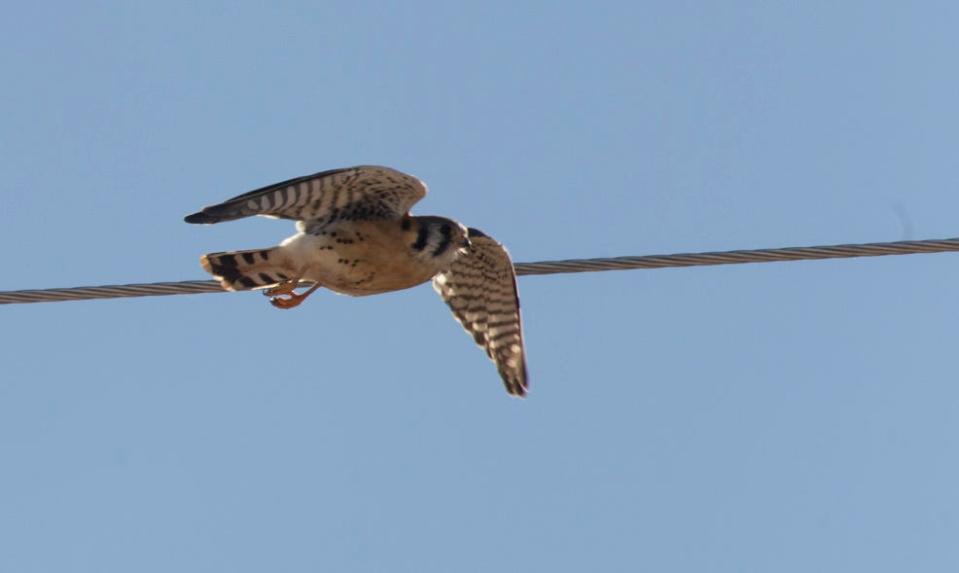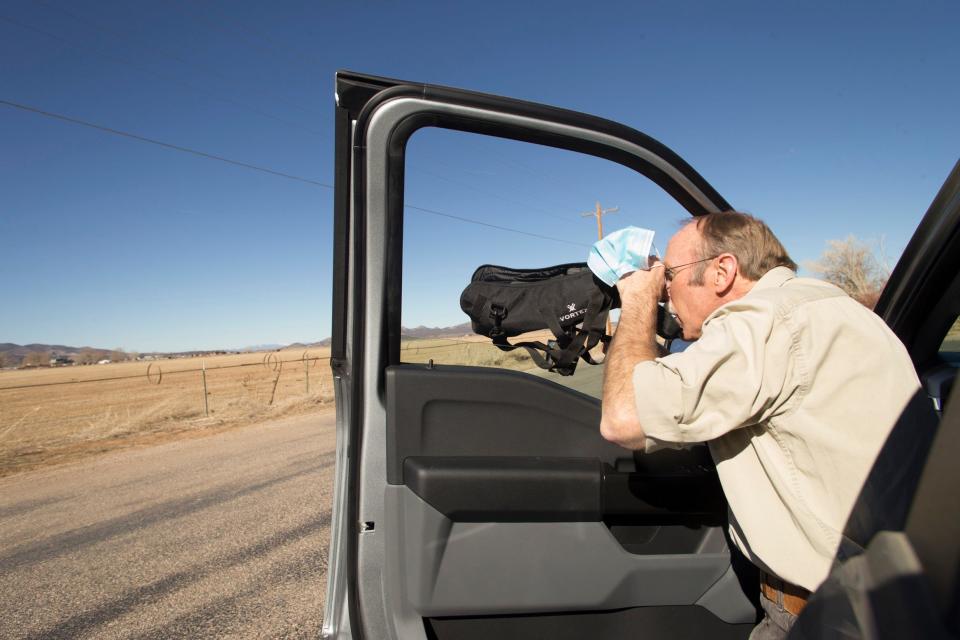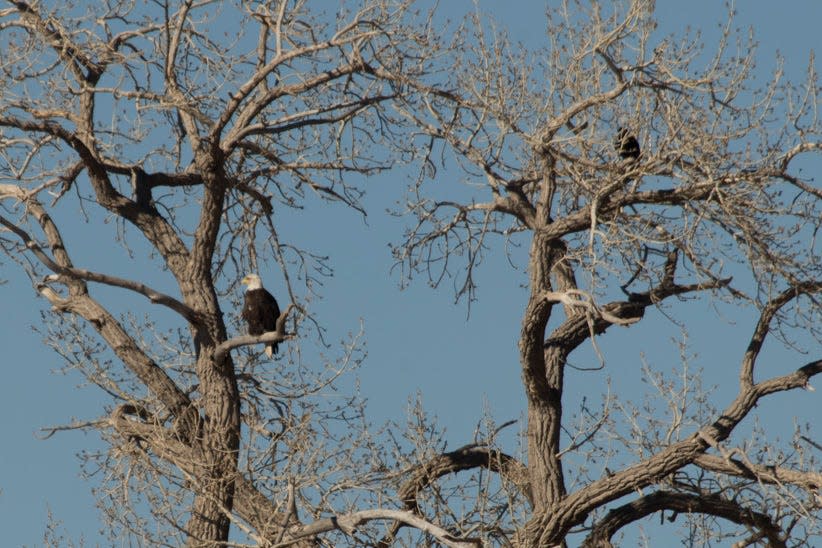Biologists see fewer birds of prey around Cedar City ahead of Utah’s storied Bald Eagle Month
The Utah Division of Wildlife Resources does a survey each winter to see how many birds of prey are living in and around Cedar City.
Keith Day, a wildlife biologist, monitors hawks, eagles, and American kestrels in the fields of Iron County, spotting different species through binoculars. He looks at the number of raptors and where they nest to see what the population looks like and could look like the next year. The DWR also looks at what could be affecting these populations and the environment where they nest.
“Electrocution is an issue. Pesticides and other poisons can be an issue and there are some diseases that periodically show up — you know that can be a problem," he said.

Because raptors are at the top of the food chain, tracking them can help biologists track other species, Day said.
"The numbers are usually lower to begin with and they can be more sensitive to environmental disturbances," he said. "So watching them can give you an idea of when something might be going wrong that needs to be addressed.”
Other species of birds, insects, and prey would be heavily impacted by that kind of change, according to Day.

Many of the raptors on these “drive-by surveys” are found in trees and along with tall posts. However, since most of them are large birds, they won't be seen on electrical lines.
The DWR is getting ready for Bald Eagle Month in February and Day said those looking forward to spotting some may see fewer than in previous years.
Zion National Park: Second wild-hatched California Condor flies near Angels Landing
“Some years ago, I estimated that between the Cedar Valley and the Parowan Valley we had 300 bald eagles wintering here," he said. "I don't think we have that many this year."
The weather has been warmer over the years, impacting the number of birds coming to Iron County.

“We also regularly pick up ferruginous hawks, golden eagles. American kestrel, usually," Day said. "There's about a half-dozen, eight species. Northern Harriers we can see along this route, but like the rough-legged hawks, we haven't been counting to them in very many numbers in the last several years."
There has been no indication that the ecosystem has been heavily impacted by not seeing these birds during the survey. The DWR does not band the birds they track, so these surveys are used to get more general numbers.
To learn more about seeing some of these raptors and especially bald eagles next month, visit bit.ly/3g4sDcH.
Elle Cabrera covers breaking news and topics. Please help us to continue producing this content at thespectrum.com/subscribe.
This article originally appeared on St. George Spectrum & Daily News: Iron County biologists see fewer birds of prey around Cedar City

